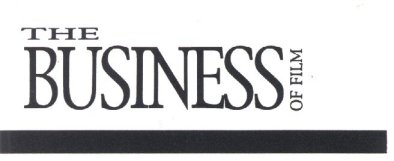|
MAY 2005 |
|
|
|
The 2005 Modus Operandi For The Independent Producer
A regular contributor to The Business of Film,
Greg S Bernstein analyses the process that is often overlooked and the
illuminates the fact that in spite of the deluge of available material on the
subject more often than not the fundamentals are misconstrued |
|
Greg S. Bernstein |
Despite a rather dramatic increase in the production of Indie films in 2005, and continued improvement in the market for the licensing of Indie films, the prospects for financing Indie films remained difficult, even with the abundance of subsidies and benefit programs being offered by governments around the world
Most Indie films produced in 2005 were financed mostly with equity (cash investment). That is not to say that “soft money” (subsidies, grants, tax schemes, etc.) did not play a significant role. They did. Shooting a film in one country, doing post in another, and accessing benefits in a third country is the rule today, not the exception. During the past year, it seemed like every other week a federal, provincial, state or local agency was announcing either a new or enhanced program to attract film production to their locale. But without equity, even the most creative indie producer would be left holding unexposed film.
There is no question that the plethora of production entitlement programs has mushroomed to a dizzying level. You need an advanced degree just to keep track of them, let alone figure them out. Over 50 countries, provinces, states or local agencies offer some kind of entitlement for production in their homeland. Even the United States government got into the act in 2004 with the addition of accelerated depreciation on certain qualifying productions (the real effect of this tax change on US production of indie films is still questionable, given the limitations of the passive loss rules on investors, and the likely repeal of the only real benefit, namely the arbitrage between deduction at ordinary tax rates and recapture at capital gain tax rates).
Yet, because the net benefit to the production from any one incentive program usually only amounts to around 12.5% to 15% of the budget (its hard to combine multiple jurisdictional benefits to more than 30%), and with the dollar down more than 30% in most jurisdictions, the benefits to US filmmakers to travel to one or more jurisdictions to take advantage of these benefits becomes marginal. (Many producers become under the mistaken belief that some such programs can provide 100% of the financing for their film. While some elements of such structures might, at least on paper, provide 100% of the budget, the end result of the transaction usually only leaves 12-15% actually available to the producer to use to make his film.)
While some jurisdictions have recently adjusted their benefits to try to take into account exchange rate changes, there is only so much government agencies can do, given that they have limited resources available for such purposes and exchange rates have changed as much as 40% in the past few years. Canada found production dropping precipitously as a result of the US Dollar falling from a typical CDN$1.67 to only CDN$1.25 or so. While most Canadian benefits to US producers have been doubled in recent months, its not enough to totally adjust for the change in exchange rates.
Thus, most non-US government entitlement programs have become a windfall to productions that would likely have shot their films in that locale anyway, for one reason or another, and are not really attracting new productions.
So where is the best place for most indie producers around the world to shoot their films? Surprise, it’s the US!
Its somewhat ironic, but after years of so-called runaway production, production in the US, thanks to a horrible dollar and some state incentives, has made shooting in the US attractive, especially for European based companies. You can save 35% of your budget over the costs of shooting in Europe, and you can take advantage of incentives of around 10-15% of your budget. (Now, for US based companies, don’t start thinking you have 45-50% of your budget covered. You only have 10-15%. That 35% savings is for not shooting in Europe. But Europeans do get that cost savings, making shooting in the US very very attractive).
For European based companies, think of the financing and production advantages. Most major stars are based here in the US, and right now they are on sale for 35% off their rates from a few years ago. Not to mention the savings on the cost of production. A camera package in LA that might have cost around Euro 3,500 per week a few years ago, now only costs Euro 2,500. Then there are the professional and experienced crews and production companies who can have your production up and running in a few weeks (as opposed to the experiences we have all had in some other “low cost” jurisdictions). Throw on top of that 10-15% in rebates, which are comparable to say a UK sale leaseback, without all the hassles, legal fees, and time, and there is no reason to shoot in Europe.
Nevertheless, whether you are a US based filmmaker trying to take advantage of local benefits, or a European trying to shoot in the US, most of the financing for your film will come from equity. Last year, of the 18 films I worked on, all were financed in whole or in part by equity. Five years ago, none would have been.
Now, while finding equity is extremely difficult, the fact that so much equity is flowing into indie film production is very significant.
Equity, or if you will, venture capital, tends to precede traditional financing, such as bank debt, which takes lower risks and receives lower rates of return. Equity seeks out opportunities that are willing to pay higher rates of return, given the associated risks. As those risks fall, such as by more presales being available and the market to sell finished films improved, debt financing, starts to replace equity. (As a producer, if you have a choice between third party equity or a bank loan, you would pick the bank loan since you know with the bank loan that you have fixed interest and a finance charge that is included in the budget, while with equity you could give up the majority of the profits, not to mention executive producer fees, other charges and control.)
When the indie film recession started in late 2000, there was an over supply of film, which caused prices to drop significantly. As time went on, the demand for films also retreated, causing further deterioration in prices. With prices falling, and many films not finding buyers at any prices, banks retreated from their gap financings of 50% or more of a film’s budget. Insurance backed deals also disappeared as the insurance companies took huge losses. With an oversupply of product, buyers did not need to prebuy, and waited to see the finished product. With less presales and lower gap, the possibility of obtaining a bank loan became more and more remote.
As presales, gap financing and traditional bank loans became hard to come by, producers had to seek out equity and pay higher rates of return than what they were used to with banks.
So why has equity jumped into the market for Indie films? Many reasons. Over the last two years there was a surge in stock prices, leaving profits available for reinvestment. Interest rates are relatively low and not an attractive investment. With the tightening in the market for Indie films, supply and demand have stabilized, which in turn has lead to a stabilization in film prices. Moreover, films are “sexy”. Having made money in other areas, investors have been looking for something “fun”, with the potential for huge returns. Still, most equity investors apply some of the same principals that they applied to make their fortunes. That being, taking calculated risks. So most of the films invested in by equity have tended to be commercial films with more certainty of results, or non-genre films, but with the reduced risks by reason of soft money benefits and acceptable cast.
Today, equity can take many forms. It may be as simple as an investor writing a check, or it maybe a non-official co-production where a local production company is supplying goods and services in the local market where the film is being shot.
Thus, combining soft money benefits, finding the holy grail of equity, and even shooting in such “low cost” locations such as the US, are the modus operandi of today’s indie producer.
****
Reprinted with permission by The Business of Film
Law Offices of GREG S. BERNSTEIN, A Professional
Corporation
9601 Wilshire Boulevard, Suite 240, Beverly Hills,
California
90210-5288.
Phone: (310) 247-2790; Fax: (310) 247-2791; Internet: www.thefilmlaw.com
HOME |
ARTICLES
|

